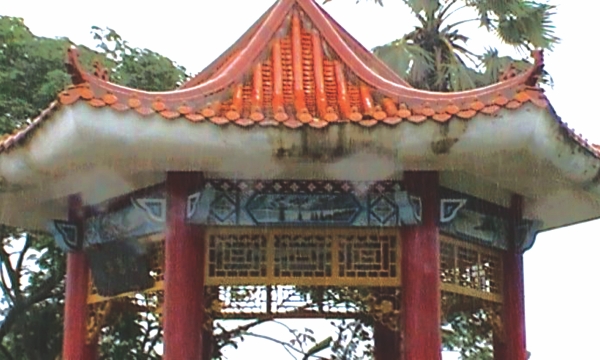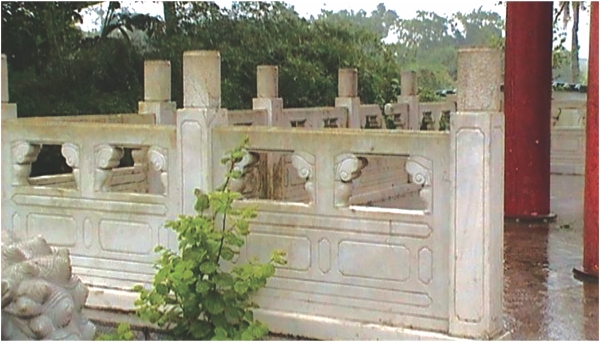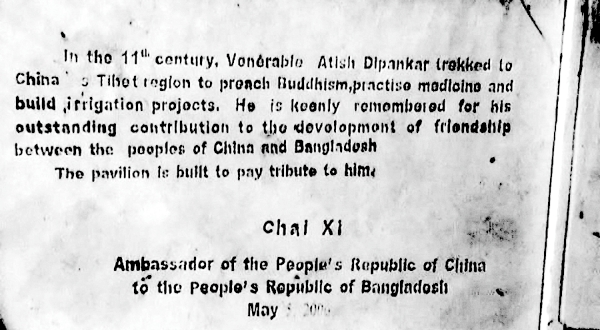Journey Through Bangladesh
Munshiganj
In Search of Atisha Dipankar Shrijnana
“Bangali Atisha langhilo giri, tushar e bhayankar,
“Jalilo gyan er dip Tibbet e Bangali Dipankar”
“The Bengali Atisha climbed the mountains, amidst the dangerous snow, without any care,
“Came he and kindled a candle of enlightenment in Tibet, the Bengali Dipankar.”
Many of us have heard and always pondered about the verse that we were made to memorize in school. Audity Falguni was intrigued by it all her life, until she made a visit to Atisha Dipankar's birth place to find out more about the philosopher.
..........................................................................................................
Audity Falguni

Atisha Dipankar Shrijnana was a medieval philosopher and is reported to have been born in 980 AD in the Vajroyogini village of Bikrampur Munsiganj, and to have passed away in 1054 AD in Niyetang, Tibet. Atisha was a Buddhist teacher from the Pala Empire who trekked to Tibet to preach Buddhism, teach medicine and work on irrigation projects.
It has been one of my long cherished dreams to visit the Vajroyogini village, Bikrampur of Munshiganj. But all the mundane chores of middle-class city life were prohibiting me from making the journey. Anyhow, I boarded on a bus from Dhaka to Munshiganj route from Gulistan bus stand on a Saturday - the 10th September - determined to visit this medieval scholar's birth place. It was an early autumn day with azure sky and bright sunshine after a heavy down pour of the last several months of monsoon. The bus service that offered me the journey is named “Dighir Dak” and all I needed to do was to disembark at Bhangar Par/Dholar Mor point after the one and half hours long ride from Dhaka. Another ten to twenty minutes on a rickshaw and I had arrived at the birth place of Atisha Dipankar. His homestead in the village is still known to the local people as Ponditer Bhita (Pundit's house). Naturally no trace of Atisha's home from 980 AD is existent, but, a small Buddhist stupa (pagoda) like structure with beautiful Chinese and Tibetan forms of animal statues, motifs and decorations had enchanted me. Yes, these structures are in reminiscence of the great Bengali scholar Atisha Dipanakar Shrijnana and had been inaugurated on 5th May, 2006, with the help of the People's Republic of China as the foundation stone of this memorial installation reads. A few hundred yards apart there lies a Library cum Auditorium in the name of this great Bengali scholar. But, the Library was closed and nothing could be viewed, during my short visit.
 |
Pavilion at Atisha Dipankar’s birthplace is influenced by oriental architecture |
Life and Work of Atisha Dipankar Shrijnana:
Atisha Dipankar was born in a royal family. The prince's birth is often described in traditional accounts as an auspicious or promising episode. For example, it is said that as Atisha was born “flowers rained down upon the city of Vikramapura, a rainbow canopy appeared, and the gods sang hymns which brought gladness and joy to all the people”. This particular description is loaded with several themes distinctly typical of Buddhist literature. Atisha's father was the king of Bengal known as Kalyana Shri, and his mother was Shri Prabhavati.
As the legends are told, on the eve of his wedding, Atisha experienced a momentous encounter with the Vajrayana Buddhist goddess Tara. According to the story the goddess stayed by him as a guiding spirit until the end of his life. Tara explained to the prince that in his past lives he had been a devout monk. Accordingly, he should not be overwhelmed by the lure of ephemeral pleasures in the world. With this revelation at the forefront of his consciousness, Atisha renounced his kingdom, family, and social status in order to find a spiritual teacher. It was in his twenty-ninth year that Atisha was formally declared a monk under an ordinance of the great Shilarakshita, and given the new name of Dipamkara Srijnana, meaning "he whose deep awareness acts as a lamp."
Even as a monk, Dipamkara Srijnana yearned for the fastest and most direct means of attaining perfect enlightenment. He made a pilgrimage to Bodhgaya. At the age of thirty-one, the monk arranged for a perilous journey, traveling for thirteen months to Sumatra in order to study under the reputable Suvarnadvipi Dharmakirti, sometimes called Dharmarakshita and known in Tibetan as Serlingpa, a supposed master of bodhichitta. Finally, after over a decade of intensive training, Dharmarakshita advised Atisha to “go to the north. In the north is the Land of Snows”. Dharmarakshita was referring to Tibet, a region with a Buddhist tradition that had forever changed after the arrival of Atisha Dipamkara Srijnana. According to Tibetan sources, Atisha was ordained into the Mahasamghika lineage at the age of twenty-eight by the Abbot Shilarakshita and had studied almost all Buddhist and non-Buddhist scriptures of his time, including teachings from Vishnu, Shiva, Tantric Hinduism and other beliefs.
Before journeying to Tibet, Atisha, however, had first visited India. Soon enough he was appointed to the position of steward, or abbot, at the venerable Buddhist college Vikramasila, established by the King Dharmapala of Bengal.
 |
Stone plaque erected at Atisha Dipankar’s birth place |
Atisha's return from Sumatra and rise to prominence in India coincided with a flourishing of Buddhist culture and the practice of Dharma in the region. Meantime, Buddhism in Tibet was in desperate need of resuscitation. The politically unstable rule of King Langdarma had suppressed Tibetan Buddhism's teachings and persecuted its followers for over seventy years. But, the new king of the Western Tibetan kingdom of Guge by the name of Lha Lama Yeshe Yod was a strict believer in Dharma and so sent his academic followers to learn and translate some of the Sanskrit Buddhist texts. Among these academics was Nagtso, who was eventually sent to Vikramasila college to study Sanskrit and plead with Atisha to come teach Dharma in his homeland.
Once he arrived, Atisha grasped very quickly the Tibetan peoples' enthusiasm for the Dharma. In Nyetang, a town near Lhasa, Atisha spent nine years during which he discovered Tibetan libraries with impressive collections written in both Sanskrit and Tibetan. The venerable monk moved around the region for another five years before passing away in 1052. His ashes were brought to Dhaka, Bangladesh on 28 June 1978 and placed in Dharmarajika Bauddha Vihara.
Atisha remains an important figure in the Tibetan Buddhist tradition for several reasons. He refined, systematized, and compiled an innovative and thorough approach to bodhichitta known as “mind training”, in such texts as A Lamp for the Path to Enlightenment, and established the primacy of bodhichitta to the Mahayana tradition in Tibet. During his career as a scholar and writer, Atisha wrote, translated and edited more than two hundred books, which helped spread Buddhism in Tibet. He translated many books from Sanskrit to Tibetan. He also wrote several books on Buddhist scriptures, medical science and technical science in Tibetan.
Our government, particularly the Ministry of Culture, can take more proactive steps in bringing some copies of the manuscripts of Atisha Dipankar from Tibet. The government can try persuade the Government of China at state dignitary level to achieve in bringing over the centuries old scripts. They can be preserved in the Atisha Dipankar Library and Auditorium while turning the entire village into a beautiful tourist spot.
Copyright
(R) thedailystar.net 2011
|
|



